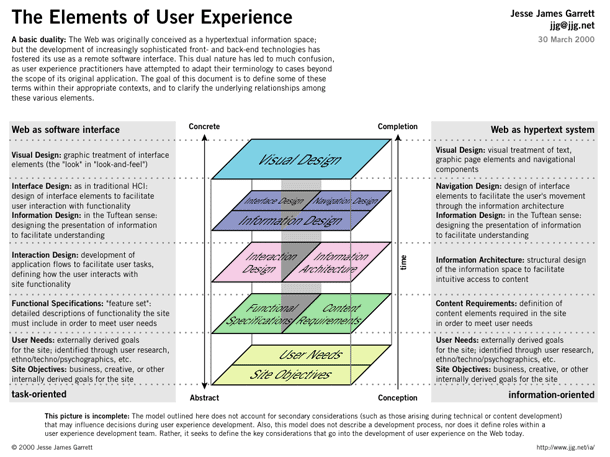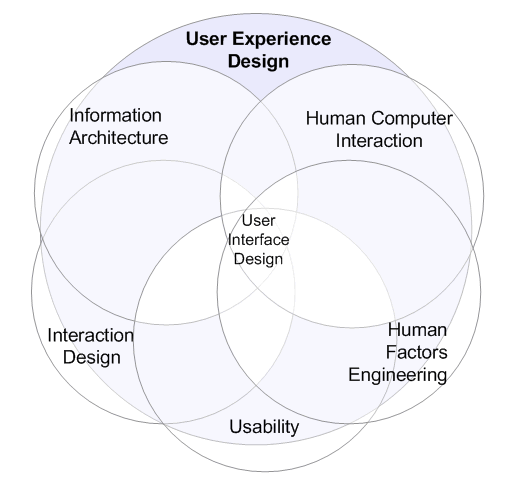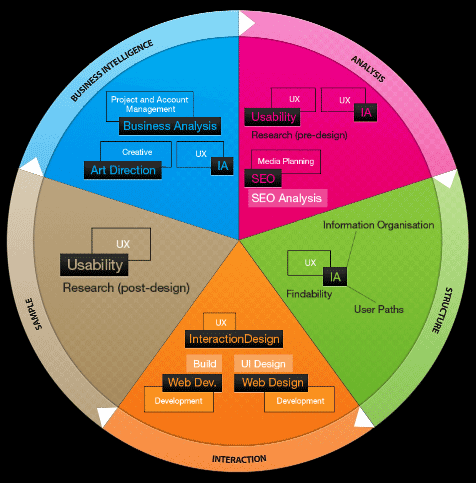Definitions
User Experience
"User Experience (abbreviated: UX) is the quality of experience a person has when interacting with a specific design. This can range from a specific artifact, such as a cup, toy or website, up to larger, integrated experiences such as a museum or an airport."
Sources: UX Net, Interaction-Design.org
"'User experience' encompasses all aspects of the end-user's interaction with the company, its services, and its products. The first requirement for an exemplary user experience is to meet the exact needs of the customer, without fuss or bother. Next comes simplicity and elegance that produce products that are a joy to own, a joy to use. True user experience goes far beyond giving customers what they say they want, or providing checklist features. In order to achieve high-quality user experience in a company's offerings there must be a seamless merging of the services of multiple disciplines, including engineering, marketing, graphical and industrial design, and interface design."
Source: "User Experience - Our Definition." Nielsen Norman Group.

Source: "The Elements of User Experience." Jesse James Garret. (PDF)
“Information architecture defines the structure of information. Interaction design enables people to manipulate and contribute to that information. Visual design communicates these possibilities to people and creates affinity to them. User experience is the summation of these considerations.”
Luke Wroblewski
Source: InspireUX
User Experience Design
"[E]xperience design uses the interactions of customers with products, services and company branding to optimize the overall impressions left by these. User experience design takes a similar approach and applies it to a specific set of products– computer-related ones. For example, an experience designer may refine the customer service and ambience of a hotel, whereas a user experience designer will optimize the customer’s interaction when making a reservation online, interacting with the hotel website or will improve the staff’s systems for managing hotel operations. The key difference can be found in the examination of the word ‘user.’"

Source: "What is User Experience Design," Montparnas.
UXBASIS' model is based on a creative process of a four part cycle; plan, act, observe and refine. On top of that is Jesse James Garretts' five layers model for web development.

Source: UXBASIS
Discussion
User Experience Designer vs. Information Architect vs. Interaction Designer
Jesse James Garret's IA Summit 2009 Keynote sparked some discussion and debate about titles.
- "JJG's IA Summit 2009 Keynote." IXDA Discussion of Jesse James Garret's keynote at 2009 IAI Summit. 3/2009
- "Its Just UX." IXDA Discussion. 3/2009.
- "Experience Design User." Chris Fahey. Graphpaper. 4/1/2009.
- "Defining UX." James Kelway. User Pathways.
- "10 Most Common Misconceptions About User Experience Design." Whitney Hess. Mashable. 1/9/2009.